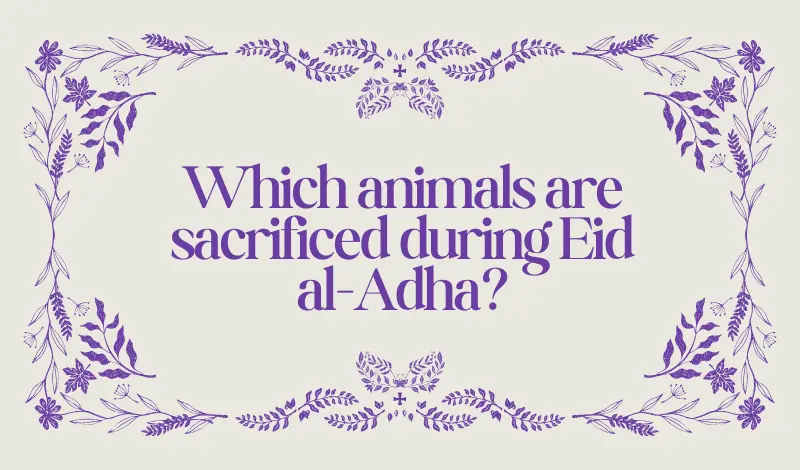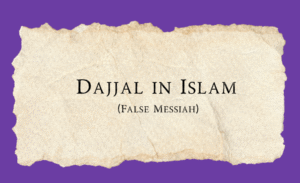Eid al-Adha, also known as the “Festival of Sacrifice,” is one of the most significant celebrations in the Islamic calendar. Observed by millions of Muslims worldwide, it marks the end of the Hajj pilgrimage and commemorates the willingness of Prophet Ibrahim (Abraham) to sacrifice his son Isma’il (Ishmael) in obedience to Allah’s command. This sacrifice is symbolic of ultimate devotion and submission to God’s will.
But what exactly is sacrificed on Eid al-Adha, and why is this practice so central to the celebration? In this comprehensive guide, we’ll explore the meaning behind the sacrifice, the types of animals that are typically slaughtered, and the broader significance of this practice within the context of the holiday. Whether you’re curious about the ritual or simply seeking more information to understand this important tradition, this post will provide a detailed look into the sacrifices made on Eid al-Adha and their cultural and religious importance.
What Is Eid al-Adha?
Eid al-Adha is celebrated annually by Muslims around the world, and it falls on the 10th day of Dhu al-Hijjah, the 12th month of the Islamic lunar calendar. This festival is celebrated in remembrance of Prophet Ibrahim’s (Abraham’s) devotion to God when he was commanded to sacrifice his beloved son, Isma’il (Ishmael). Before the sacrifice could take place, Allah intervened and provided a ram to be sacrificed instead, symbolizing divine mercy.
The story reflects themes of obedience, sacrifice, and faith, and the act of animal sacrifice on this day serves to commemorate this pivotal moment in Islamic history. For Muslims, Eid al-Adha is a time to reflect on the teachings of Ibrahim and demonstrate generosity, gratitude, and submission to Allah.
The Significance of Sacrifice on Eid al-Adha
The primary act of worship during Eid al-Adha is the Qurbani—the ritual sacrifice of an animal. This practice holds deep spiritual meaning and is performed in various ways depending on cultural norms and geographical locations. The sacrifice is symbolic of the willingness to give up something valuable for the sake of Allah, in remembrance of Prophet Ibrahim’s devotion. The meat from the sacrificed animal is shared among family, friends, and those in need, reinforcing the values of charity and community.
Religious Significance:
Obedience to Allah’s Command: By performing the Qurbani, Muslims demonstrate their submission to Allah’s will, just as Ibrahim did when he was willing to sacrifice his son.
- Charity and Giving: A key aspect of the sacrifice is the distribution of meat. One-third of the meat is given to the poor and needy, one-third to relatives and friends, and the remaining third is kept for the family. This highlights the importance of charity in Islam.
- Purification and Gratitude: Eid al-Adha is seen as an opportunity for Muslims to purify their hearts, strengthen their faith, and show gratitude for the blessings they have in life. Sacrificing an animal signifies cleansing one’s soul and demonstrating gratitude for Allah’s mercy.
What Animals Are Sacrificed on Eid al-Adha?
The animal sacrificed on this day is not just any animal but must adhere to specific guidelines and regulations outlined in Islamic law (Sharia). The type of animal, its age, and its health all play a role in determining whether it is suitable for sacrifice during Eid al-Adha.
While the exact choice of animal may vary depending on the region, availability, and local traditions, there are certain animals that are predominantly used for the sacrifice. Let’s dive deeper into the specific animals that are sacrificed, the criteria for selecting them, and the cultural significance behind each choice.
1. Sheep
Sheep are one of the most popular animals sacrificed during Eid al-Adha. They are often the preferred choice due to their moderate size, ease of handling, and the relatively small cost involved, making them accessible to a wide range of people, including families and individuals.
Why Sheep?
Accessibility and Cost: Sheep are available in many parts of the world, making them an easy and affordable option for the majority of Muslims, especially in regions where livestock farming is common.
Ideal Size: Sheep are an ideal size for the family unit. Their meat is enough for smaller households, allowing for the distribution of meat to family members, neighbors, and those in need.
Age Requirement: A sheep must be at least one year old to be suitable for sacrifice. In some cases, a six-month-old lamb is considered acceptable if it is considered to be in good health and has reached an appropriate size.
Cultural Significance of Sheep:
In many cultures, sheep are seen as a symbol of humility and purity. Their use in the sacrifice underscores themes of modesty and submission to the will of Allah, echoing Prophet Ibrahim’s own submission when he was willing to sacrifice his son.
2. Goats
Sacrificing a goat in islam very common on Eid al-Adha sacrifice in countries like Pakistan,Indiaand Bangaladesh. Goats, like sheep, are relatively easy to care for and are an accessible choice for many people across the globe.
Why Goats?
Widely Available: Goats are commonly found in rural areas and are especially popular in regions like Africa, South Asia, and parts of the Middle East.
Slightly Smaller Than Cattle: Goats offer a smaller but still significant amount of meat, making them an excellent option for smaller families or communities.
Age Requirement: A goat must also be at least one year old to be sacrificed, with some scholars accepting a younger goat if it reaches a certain size.
Cultural Significance of Goats:
Goats often symbolize resilience and independence in various cultures. Their sacrifice on Eid al-Adha speaks to the qualities of selflessness, humility, and devotion that are central to the holiday’s spiritual themes.
3. Cows and Buffalo
For larger families or communities, cattle (including cows and buffalo) are also commonly chosen for the sacrifice. While not as common for individuals, cattle offer a much larger quantity of meat, making them ideal for larger gatherings and for distributing meat to a greater number of people, especially the poor.
Why Cattle?
More Meat: The most obvious reason why cattle are used is that they provide a large amount of meat, which can feed many people. In many countries, communal sacrifices are common, with entire communities coming together to share the meat of a single large animal.
Symbolic Value: Cattle hold great cultural and economic value, particularly in agrarian societies. The sacrificial offering of such a large and valuable animal is a symbolic gesture of devotion and sacrifice in the highest regard.
Age Requirement: Cattle must be at least two years old. This age requirement ensures that the animal is mature and healthy enough for the sacrifice.
Cultural Significance of Cattle:
In many farming cultures, cattle are highly prized for their strength and usefulness. Sacrificing a cow or buffalo during Eid al-Adha is often seen as a significant gesture of piety, wealth, and generosity.
4. Camels
In some regions, particularly in the Middle East, North Africa, and parts of South Asia, camels are sacrificed during Eid al-Adha. The practice is more common in areas where camels are prevalent and have economic and cultural significance.
Why Camels?
Cultural and Historical Importance: Camels have been an integral part of desert life for centuries, serving as a source of transport, milk, and meat. Their sacrificial significance reflects this deep historical and cultural connection.
Large Animal: Like cattle, camels provide a substantial amount of meat. The sacrifice of a camel is often considered a communal effort where many people benefit from the meat.
Age Requirement: Camels must be at least five years old for sacrifice, ensuring that they are sufficiently mature and strong for the ritual.
Cultural Significance of Camels:
Camels are often associated with endurance, resilience, and survival in harsh desert environments. Their sacrifice during Eid al-Adha represents the willingness to give up something valuable and enduring in service to Allah.
Criteria for the Animal’s Suitability
Regardless of the type of animal being sacrificed, there are specific criteria that must be met to ensure the sacrifice is valid and acceptable in Islam:
- Halal (Permissible) Animals: The animal must be from a species that is lawful to consume in Islam, which excludes carnivorous animals (like dogs, cats, and lions) and those considered impure (such as pigs).
- Physical Health: The animal must be in good health, free from defects or illnesses that could affect its suitability for sacrifice. For example, animals with missing limbs, blindness, or severe injury are not acceptable.
- Age Requirements: Each animal species has a prescribed age, which ensures the animal is of sufficient maturity for sacrifice. For instance, a sheep must be at least one year old, while a camel must be five years old.
- Humaneness of Slaughter: The sacrifice must be performed by a Muslim who is of sound mind, and the animal should be slaughtered according to Islamic methods to ensure it is done humanely and ethically.
What Things Can’t Be Sacrificed on Eid al-Adha?
While Eid al-Adha is a time of immense devotion, charity, and reflection, it also involves specific rituals, including the sacrificial offering of an animal. The act of sacrifice, or Qurbani, is performed as a symbol of obedience to Allah, and the animals selected for this ritual must meet specific criteria. However, just as there are things that can be sacrificed, there are also certain things that cannot be sacrificed on Eid al-Adha. This includes not only the types of animals but also practices, behaviors, and conditions surrounding the sacrifice.
Let’s discuss what animals and practices are not permissible for sacrifice during Eid al-Adha, as well as some broader spiritual and ethical guidelines that Muslims follow during the holiday.
1. Animals That Cannot Be Sacrificed
Islamic law (Sharia) outlines clear rules regarding which animals are suitable for sacrifice on Eid al-Adha. Any deviation from these regulations will make the sacrifice invalid. Below are animals that cannot be sacrificed on this special occasion:
- Carnivorous Animals: According to Islamic principles, only herbivores (plant-eating animals) can be sacrificed. Carnivores, such as lions, tigers, dogs, cats, or wolves, are not permissible because their diet and lifestyle are considered impure in Islamic law. Sacrificing a carnivorous animal would not meet the conditions of the ritual sacrifice (Qurbani) since such animals cannot be consumed in Islam.
- Pigs: They are considered impure (haram) in Islam, and their meat is forbidden (also called haram) to consume. As a result, pigs cannot be sacrificed for Eid al-Adha. Even though pigs may be available in some regions, they are completely excluded from the list of sacrificial animals because of their impurity in Islamic dietary laws.
- Animals That Are Sick or Disabled: The animal to be sacrificed must be healthy and free from defects. Animals with severe physical disabilities or diseases (such as missing limbs, blindness, or lameness) are not allowed for sacrifice. This ensures that the sacrifice is a pure and complete offering to Allah. The sacrifice should symbolize the best of what one can give, not an inferior or compromised animal.
- Very Young Animals: For the sacrifice to be valid, the animal must be of a certain age to ensure it is sufficiently mature. For example, sheep should be at least one year old (in some cases, a six-month-old lamb may be allowed if it is healthy and large enough). Goats must be at least one year old. Cattle (cows and buffalo) must be at least two years old. Camels must be at least five years old. Sacrificing an animal that has not reached the required age is considered invalid, as it does not meet the standards of what is expected for Qurbani.
- Animals That Are Too Old or Weak: If the animal is too old or frail to be considered a healthy sacrifice, it cannot be used for Qurbani. Islam encourages giving one’s best, and sacrificing an animal that is weak or frail would not align with the tradition’s principles. The sacrifice should be of an animal that is strong and healthy enough to provide for the community, as the purpose of the sacrifice is not just symbolic but also practical, sharing the meat with those in need.
2. Ethical Practices and Behaviors That Cannot Be Part of the Sacrifice
In addition to the physical qualifications of the animal itself, there are also spiritual and ethical guidelines surrounding the act of sacrifice that must be adhered to. Violating these ethical practices can invalidate the sacrifice and diminish its spiritual value.
- Inhumane Treatment of the Animal: Islam places a high emphasis on the humane treatment of animals. Before sacrificing an animal, it must be treated with kindness and respect. This includes providing adequate food, water, and proper living conditions. Any cruelty towards the animal, such as prolonged mistreatment, stress, or abuse, goes against the ethical guidelines of Islamic slaughter and invalidates the sacrifice. Muslims are required to slaughter the animal swiftly and painlessly by cutting the throat, windpipe, and blood vessels in the neck to ensure the animal’s suffering is minimized.
- Sacrificing Without Proper Intent (Niyyah): The act of sacrifice must be performed with the right intention (niyyah), which means it should be done sincerely for the sake of Allah. If the sacrifice is done for show or out of pride, it will not be accepted as a valid Qurbani. The animal should be sacrificed solely for the worship of Allah, and the act should reflect submission to God’s will. Any act of sacrifice done for other reasons, such as status or social pressure, would invalidate the purpose of the ritual.
- Sacrificing Without Following Proper Islamic Procedures: The sacrifice must be done in accordance with Islamic law. This includes reciting the proper supplications (Bismillah Allahu Akbar) before slaughter and following specific rules regarding the method of slaughter. Performing the sacrifice without following these guidelines would render the act incomplete or invalid, as the ritual’s religious significance relies on the proper execution of its steps.
3. Sacrificing Too Many Animals
While sacrificing multiple animals is permissible (especially for larger families or communities), there is a limit to how many an individual can sacrifice. The tradition encourages one sacrifice per person or family, with the distribution of the meat ensuring that the needy benefit from the sacrificial offering.
Why Not Sacrifice Excessively?
Islam emphasizes moderation and self-control. While generosity is encouraged, over-indulgence and excess can detract from the spirit of the sacrifice, which is about humility, devotion, and charity.
Sacrificing more animals than necessary without fulfilling the core purpose of the ritual may be considered wasteful or indulgent. The focus should be on sharing the sacrifice and benefiting those who are less fortunate.
4. Sacrificing Animals Without Permission
In some cases, animals may be sacrificed without the proper legal or social consent, especially in certain regions or societies where regulations are in place regarding slaughtering practices. Whether it’s a matter of local laws, cultural guidelines, or community standards, permission and regulations must be respected.
Sacrificing an animal in violation of local or national regulations may harm the animal, break the law, or fail to meet the ethical standards outlined in Islam. A sacrifice performed under such conditions would lose its spiritual and practical value, as both the welfare of the animal and the community’s rules must be respected.
Summary
The sacrifice of animals on Eid al-Adha is a deeply symbolic and meaningful act that commemorates Prophet Ibrahim’s devotion to Allah. Whether it’s a sheep, goat, cow, camel, or, in some rare cases, other animals, the sacrifice represents a willingness to give up something valuable for the sake of God, and to reflect on the teachings of obedience, charity, and humility.
Ultimately, the animal choice reflects not only the practical considerations of size, availability, and cost but also the cultural and symbolic importance of the sacrifice. By performing the Qurbani, Muslims uphold a time-honored tradition that spans centuries, ensuring that the spirit of sacrifice, generosity, and faith continues to be celebrated worldwide.






